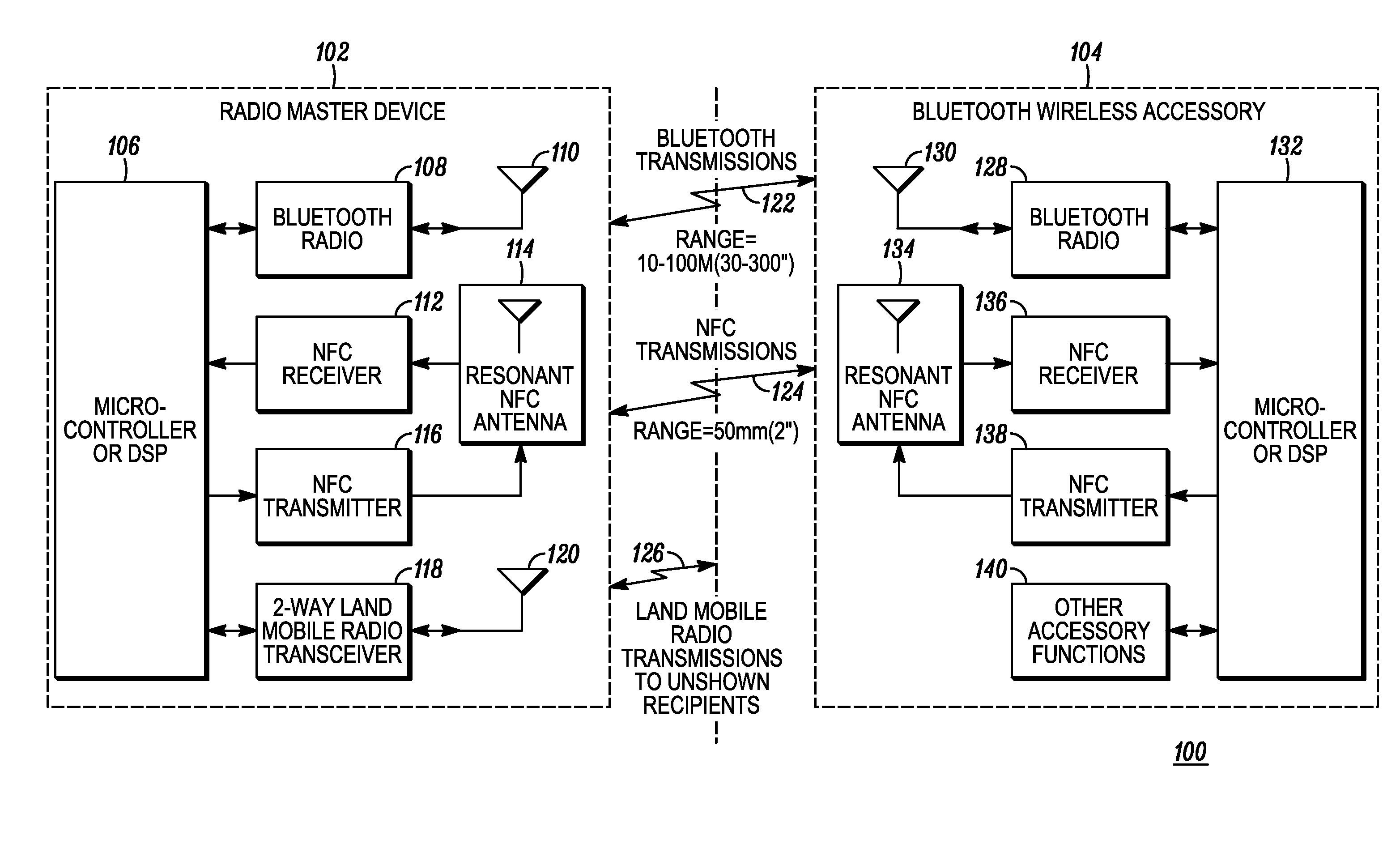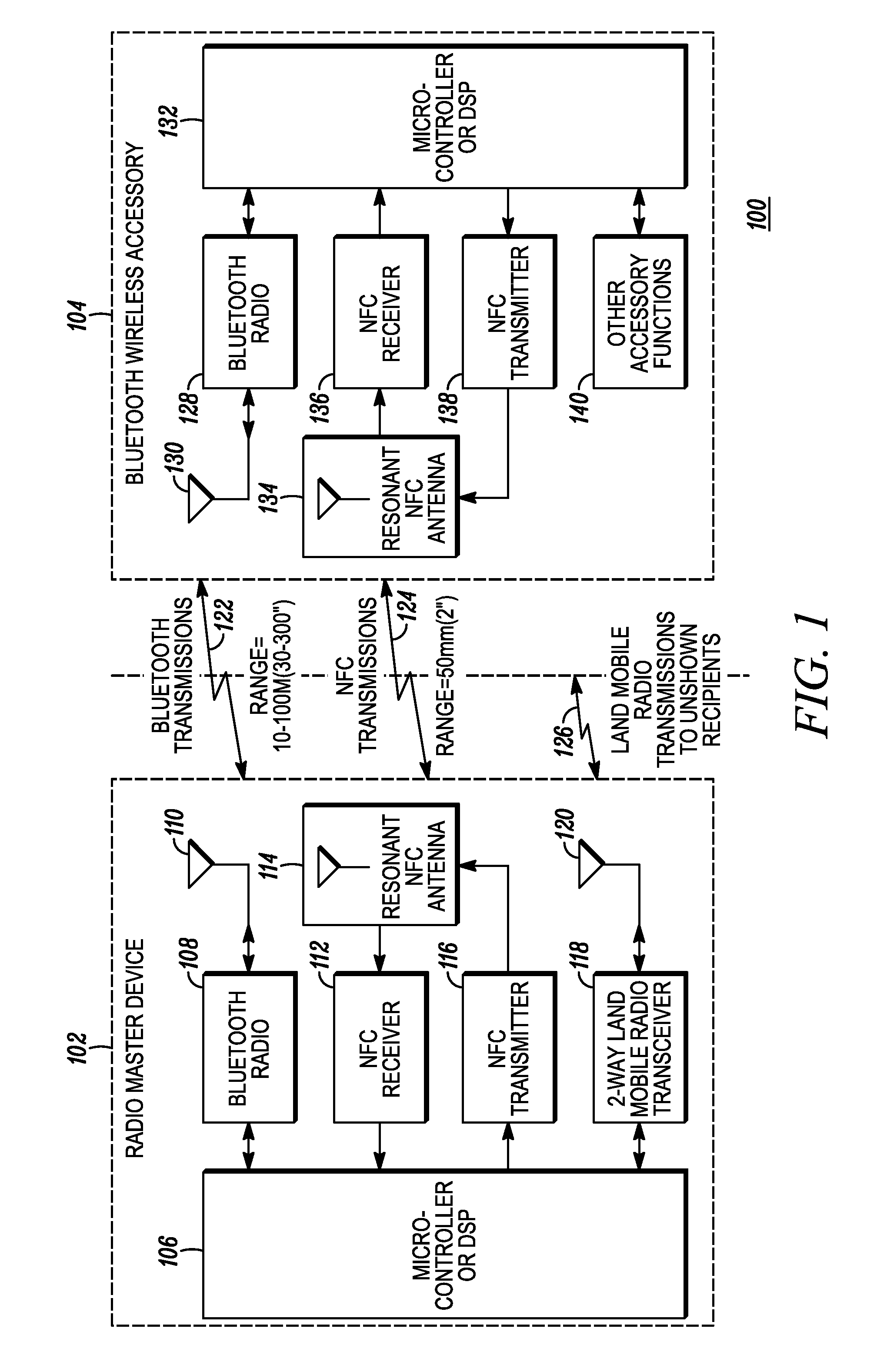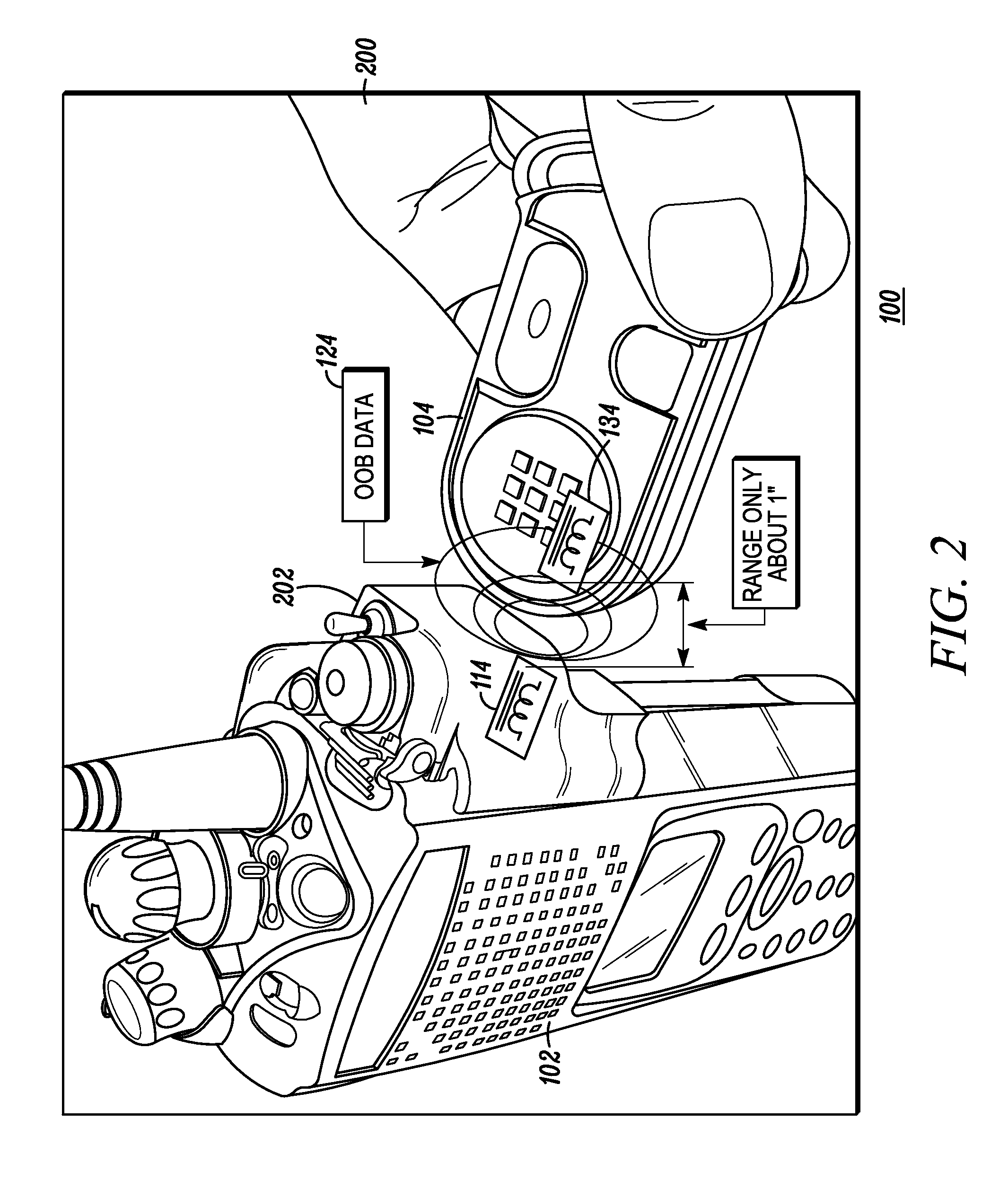Method and system for near-field wireless device pairing
a wireless device and near-field technology, applied in the direction of network topologies, electrical devices, security arrangements, etc., can solve the problems of limited user interfaces or even no user interfaces, incompatible devices with no display, and no access to the radio's gui
- Summary
- Abstract
- Description
- Claims
- Application Information
AI Technical Summary
Problems solved by technology
Method used
Image
Examples
Embodiment Construction
[0013]Generally speaking, pursuant to the various embodiments, a first communication device, e.g., a radio, and a second communication device, e.g., an accessory, implement a wireless device pairing procedure using an out of band (OOB) signal to exchange numerical credentials so that the devices can subsequently form a link for communications using electromagnetic radio signals. The accessory transmits a beacon, wherein the beacon comprises a pairing request. Upon a user bringing the radio and the accessory in close enough proximity, the radio receives the beacon using near-field apparatus included in the radio. In response to receiving the beacon, the radio initiates a pairing procedure and confirms the accessory as being a trusted device, wherein the pairing procedure comprises a data exchange between the radio and accessory, and wherein the beacon and the data exchange comprise a non-propagating radio signal generated using the near-field apparatus, wherein the non-propagating ra...
PUM
 Login to View More
Login to View More Abstract
Description
Claims
Application Information
 Login to View More
Login to View More - R&D
- Intellectual Property
- Life Sciences
- Materials
- Tech Scout
- Unparalleled Data Quality
- Higher Quality Content
- 60% Fewer Hallucinations
Browse by: Latest US Patents, China's latest patents, Technical Efficacy Thesaurus, Application Domain, Technology Topic, Popular Technical Reports.
© 2025 PatSnap. All rights reserved.Legal|Privacy policy|Modern Slavery Act Transparency Statement|Sitemap|About US| Contact US: help@patsnap.com



